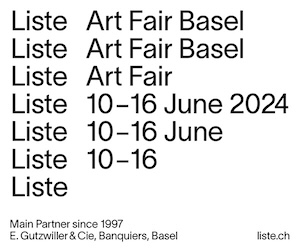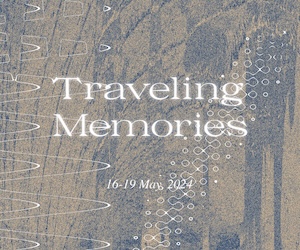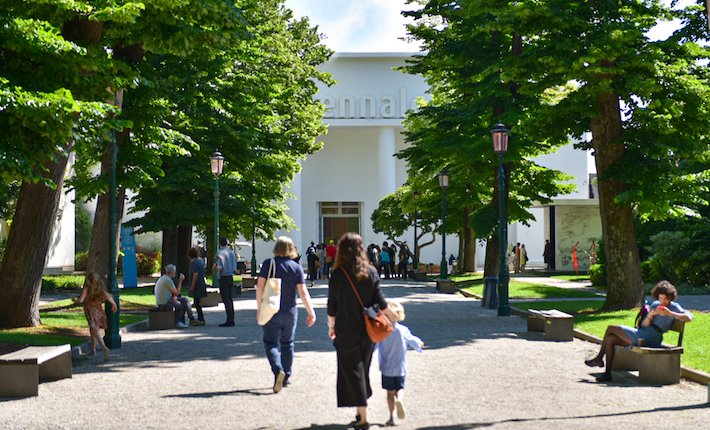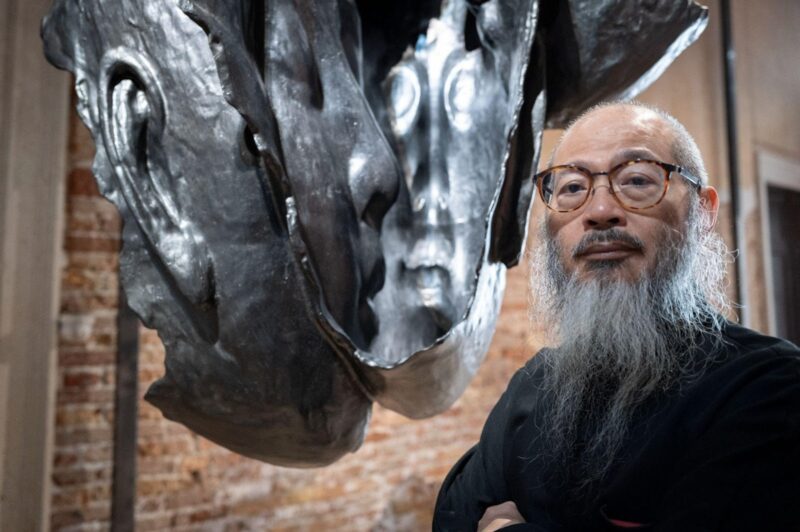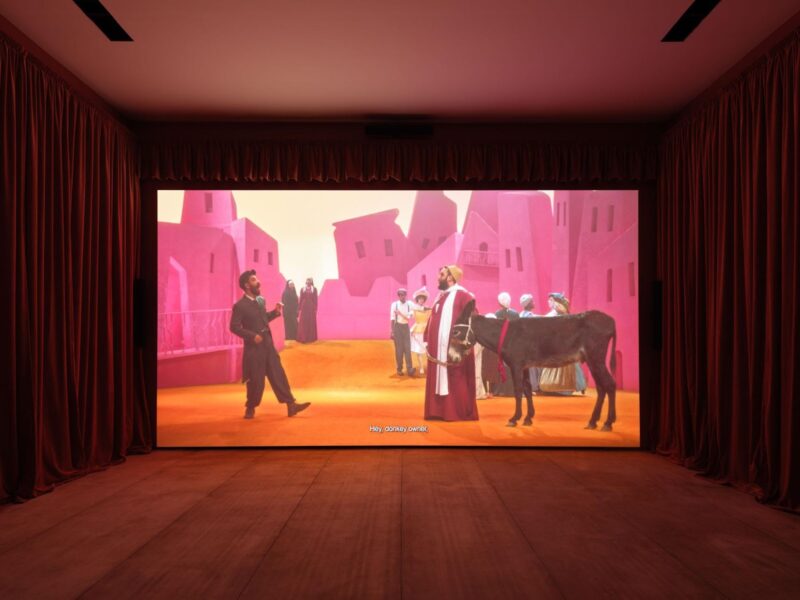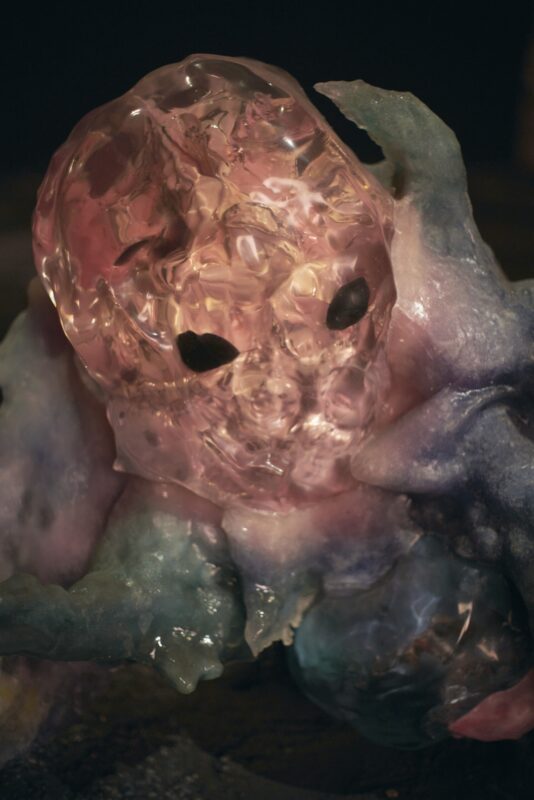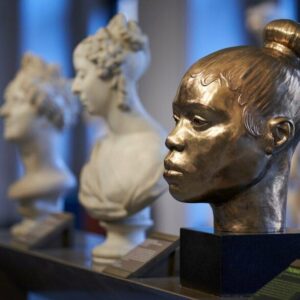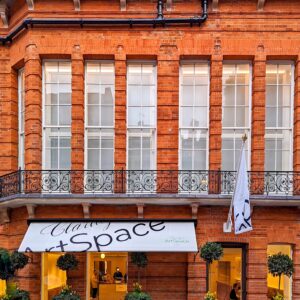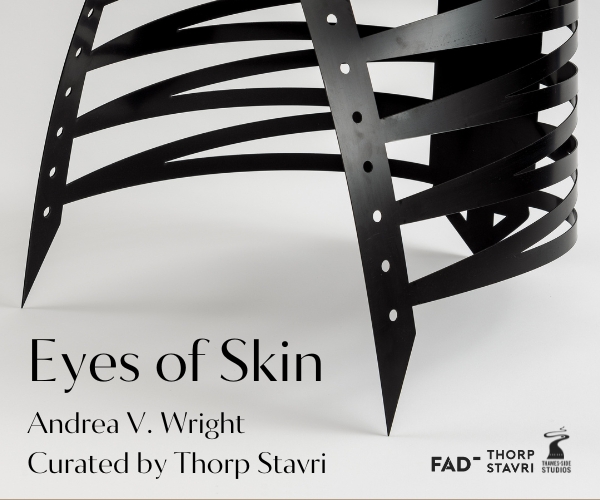Tabish Khan the @LondonArtCritic, takes a break from London to pick his highlights from the pavilions outside the two main sites of the Venice Art Biennale and exhibitions across wider Venice. Check out part 1 for his highlights from the Giardini and the Arsenale.
National pavilions outside the main sites
A lot of attention is on the national pavilions at the two main sites of the Giardini and the Arsenale but there are great finds further afield. I’ll confess I didn’t make it to all the national pavilions, but here’s my pick of those that I did see.
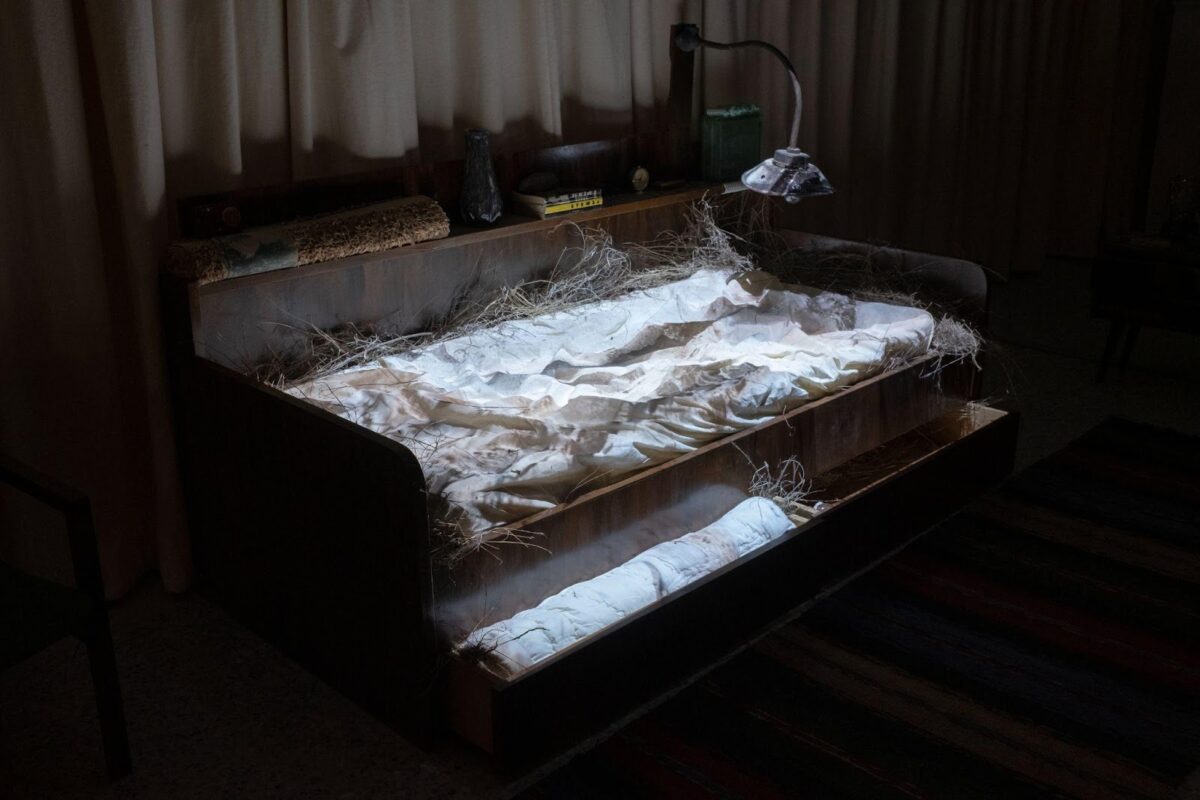
It’s the old musty smell that hits you as you enter the Bulgarian pavilion, ‘The Neighbours’, in an installation composed of a living room, bedroom and kitchen complete with aged furniture. Once you’re in, the stories begin as people tell their heartbreaking stories of state violence during Bulgaria’s socialist era – it’s a truly moving immersive experience.

The Portuguese pavilion is like stepping into a greenhouse with plants in all the rooms. Colonial powers created monocrop plantations in the lands they invaded and it’s a legacy we’re still living with today – this ‘Creole garden’ flips that concept by referencing the private plots that enslaved peoples would often cultivate both for their own needs and also as acts of resistance. It’s a fantastic concept that looks spectacular within an indoor setting. It’s housed within the Palazzo Franchetti, which includes three other exhibitions, and I’d recommend visiting ‘Breasts’ in the same building whose focus is as you would expect on artworks containing breasts ranging from Salvador Dali to contemporary artists such as Charlotte Colbert.

Nigeria’s pavilion also impressed me, purposefully housed in a palazzo that’s looking a little worse for wear to show how these vibrant and varied contemporary works contrast with the fading power of old Europe. The two works that stood out for me most were Yinka Shonibare’s powerful imagining of looted treasures returned to their rightful homes and Toyin Ojih Odutola’s semi-mystical drawings.
The pavilion of the Holy See (Vatican) is one of the most memorable as it’s inside a functioning women’s prison on the island of Giudecca. This means you need to surrender your passport and phone, before guards check you over and two prisoners lead you on a tour around the prison. The artworks are a mixed bag but the experience is one I’ll never forget, and it’s also great to hear the prisoner’s stories as they take you into parts of the prison they can’t normally access. Make sure you book well ahead as you can’t access it otherwise. While visiting Giudecca, make sure to also visit Crip Arte Spazio that celebrates art made by artists who are part of the UK disability arts movement.
Exhibitions in Venice
As there are so many great exhibitions in Venice at the moment, I’ve split them by regions so you can group them together as you cover the city. One of the great things about Venice is also the amazing architecture and the fact you can stumble across exhibitions and I’ve highlighted some of those as well.
Exhibitions in Dorsoduro
Top billing of exhibitions in Venice must go to Pierre Huyghe at the Punta Della Dogana (ticketed). Step into the semi-darkness and navigate through aquarium installations, a creepy video of a helper monkey in a mask performing tasks around the house, and the unsettling actors who walk around the space wearing masks modelled on Constantin Brancusi works that emit whispering noises that we can’t quite understand. It’s an impressive exhibition to get both physically and mentally lost within.

I also enjoyed the Jim Dine exhibition at Palazzo Contarini Corfu, particularly his hefty metal sculptures, in an exhibition that cuts across all the mediums he works with – in yet another impressive palazzo. I also stumbled across the digital work of Memo Akten at the Chiesa di Santa Maria della Visitazione – it’s the kind of digital artwork that I may walk past in any other setting but inside this beautiful church it suddenly becomes elevated by its surroundings.
The two other big exhibitions in the region didn’t quite click for me. Willem de Kooning at Gallerie dell’Accademia (ticketed) is a well put together show but I’ve only ever liked his sculptures and his paintings haven’t won me over. Jean Cocteau at Peggy Guggenheim Museum (ticket) is also an interesting aside, as I didn’t know much about the artist, but another one that didn’t win me over to his work.
Exhibitions in San Polo & Santa Croce

Fondazione Prada is a must visit to see the overwhelming exhibition of works by Christoph Buchel (ticketed). On stepping in it feels like we’re in the wrong place as the normally grand interior is filled like a store room and as we venture further inside there’s a pawn shop, crypto currency mining, guns for sale and even knock off designer handbags on show. It’s the dark underbelly of consumerism and capitalism unleashed in one of Venice’s grandest buildings.
Karine Nguyen Van Tham and Parul Thacker have a show at Palazzo Vendramin Grimani and it wasn’t on my list, but I saw a sign and followed it down some narrow streets to find an impressive textile exhibition inside a stunning palazzo that I’d never visited – despite having been to Venice six times. Stumbling across art in impressive venues is one of the great joys of visiting Venice during the Biennale.
Exhibitions in Cannaregio

This region is on fire this year with several excellent exhibitions in the area, starting with Shazia Sikander’s Collective Behaviour at Palazzo Van Axel, where drawing inspiration from traditional South Asian techniques she creates beautiful paintings and sculpture. Just around the corner is Unit London’s In Praise of Black errantry, a group show of Black artists that includes works by Basquiat, Adelaide Damoah and these fantastic figurative drawings by Phoebe Boswell (pictured above).
Yu Hong has created a golden set of paintings running from birth through to death that feel perfectly suited to the deconsecrated Chiesetta della Misericordia, and while the next door Zeng Fanzhi exhibition at Scuola Grande della Misericordia didn’t win me over it’s worth visiting for the architecture of the building alone.
Sticking with art in churches the paintings of stormy skies by Maria Kreyn are perfectly suited to the interior of the Chiesa anglicana di San Giorgio – the only Anglican church in Venice.
Exhibitions in San Marco and Castello
Ocean Space has some fantastic commissions by Indigenous artists from the Pacific, including a protest against deep sea mining that can only be activated by visitors collectively rowing together on rowing machines modified with paddles.
Sarah Sze’s work at Victoria Miro on memory and recollection is projected across planar installations so it appears fragmented, much like how our memories can be, and it’s accompanied by her paintings in the second space.
Shane Guffogg’s paintings inspired by music are a great reason to visit Venice’s hidden gem the Scala Contarini del Bovolo and Lauren Baker’s bronze plant with eyes is the standout piece in the sculpture garden in the Giardini Marinaressa.
Rick Lowe’s paintings at Palazzo Grimani grew on me as I came to understand his activist background and how his pieces incorporate the idea of how maps can be used as tools of unity or division, there’s a great collection of works by the Lalanne’s at Palazzo Rota Ivancich of their trademark design / art / furniture all modelled on animals, and it’s best to avoid Julie Mehretu at Palazzo Grassi as the work gets very same-y very quickly.
Further afield

You’ll need to hop on a boat to see Berlinde De Bruyckere’s archangels that appear to be masked and falling apart, but it’s worth it as they are made all the more powerful when standing within the Abbazia di San Giorgio Maggiore. It’s one of my favourite installations in Venice at the moment, and it’s best to avoid the rather lacklustre Alex Katz exhibition at Fondazione Giorgio Cini (ticketed) around the corner.
Many of the exhibitions will run for the full length of the Biennale until 24th November, but please do check before planning a visit, and all exhibitions are free to visit unless marked as ticketed.
Portugal pavilion – © Matteo Losurdo. Nigeria pavilion image: Marco Cappelleti Studio. Courtesy: Museum of West African Art (MOWAA). Jim Dine photo: ©? Ugo Carmeni. In praise of black errantry image courtesy of Unit © Studio Rio. Ocean Space photo: Giacomo Cosua. Berlinde De Bruyckere image: © Berlinde De Bruyckere. Courtesy the artist and Hauser & Wirth. Photo: Mirjam Devriendt
